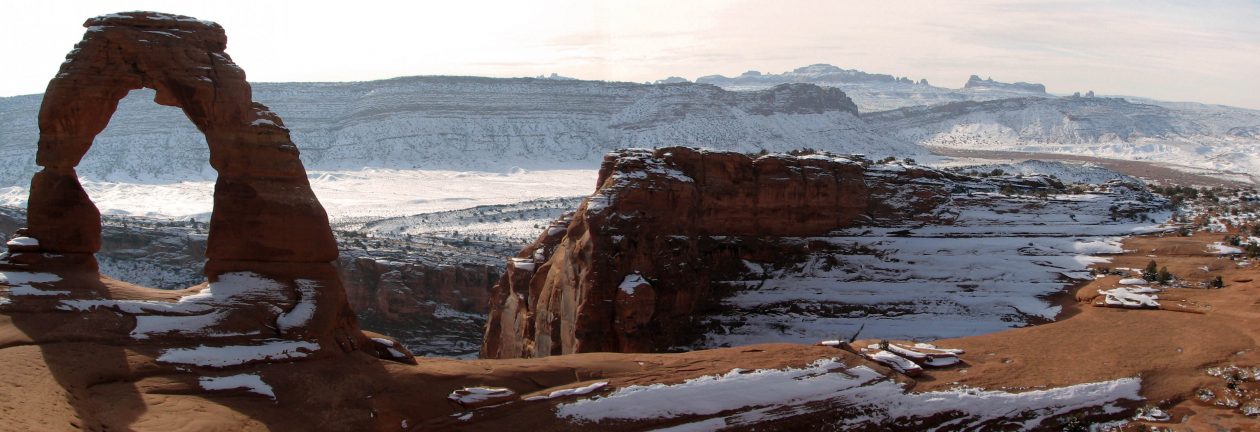Bethlehem, Israel
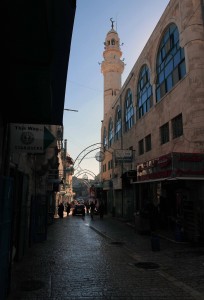
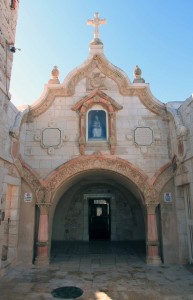
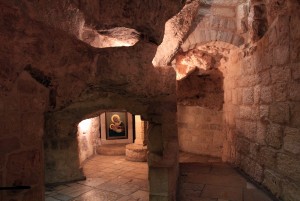
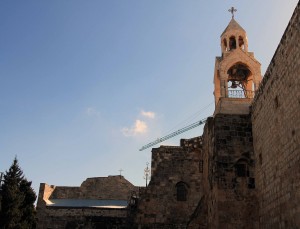
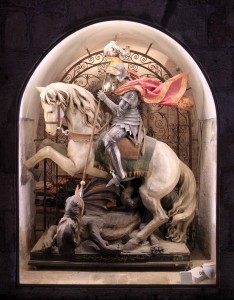
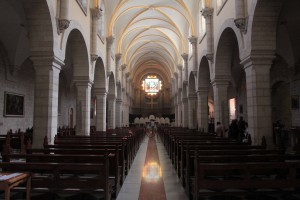
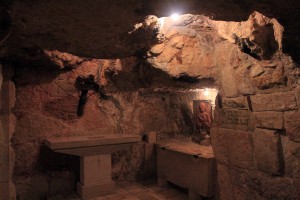
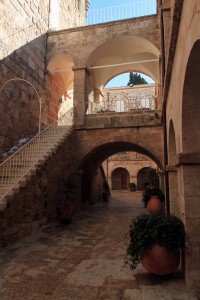
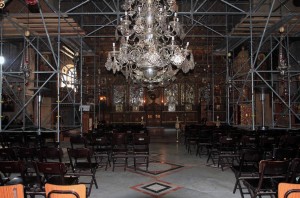
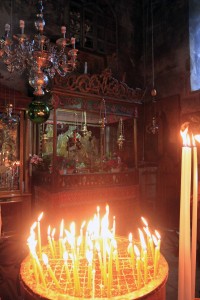
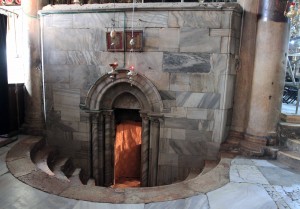
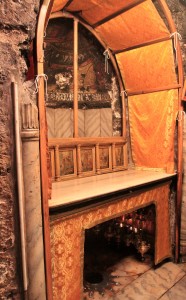

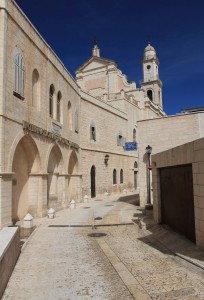
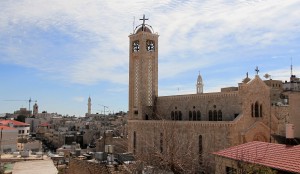
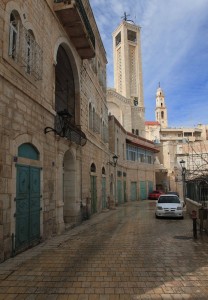
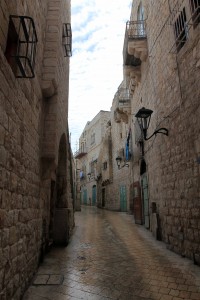
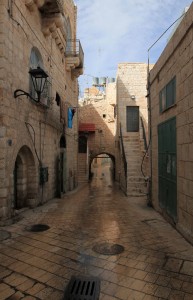
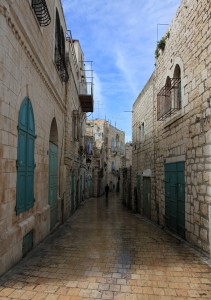

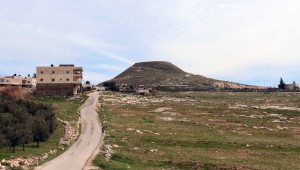
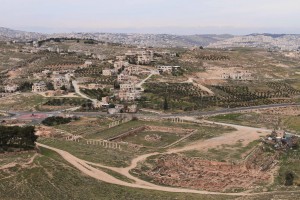
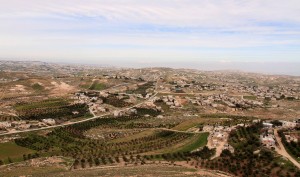
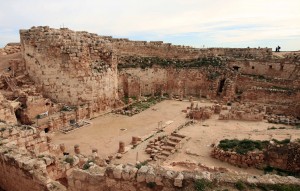
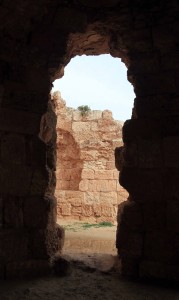
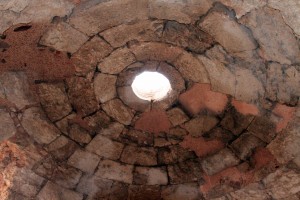
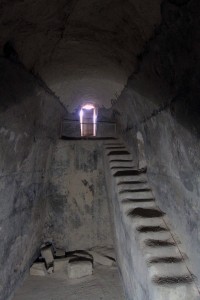
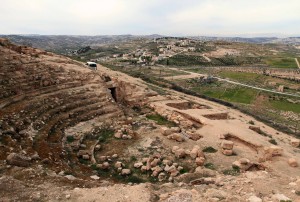
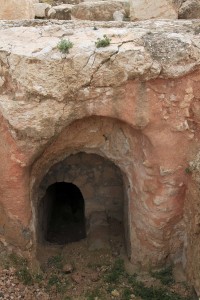
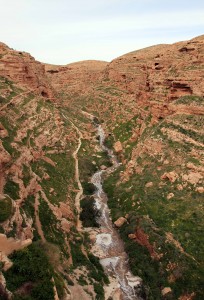
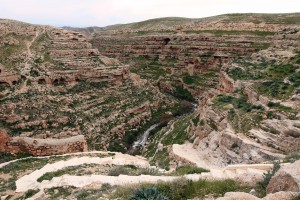
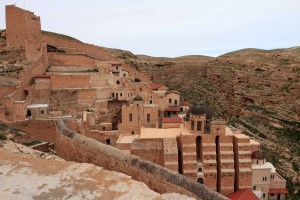
I woke up today at 07:00, got ready, and then walked to the Arab Bus Station near Damascus Gate, north of the Old City of Jerusalem. The weather was a vast improvement over pretty much every other day I had spent in Israel and it did not rain, hail, nor snow at all today. I reached the bus station and took the bus to Bethlehem, in the West Bank. The ride took forty minutes and we crossed the checkpoint and the wall separating Israel and the West Bank on the way. After reaching Bethlehem, I walked to the Old City center and made my way to the Church of the Nativity. The church was originally commissioned in 327 AD by Emperor Constantine and his mother Helena; since then, it has been destroyed, rebuilt, and renovated like most very old, historic structures. Under the main altar (maintained by the Greek Orthodox Church) is a grotto where the Nativity occurred, as well as the tomb of St. Jerome. I walked around the church (which was being heavily renovated inside – in particular, its roof) and the adjacent Church of St. Catherine (the Roman Catholic Church), but, this being Sunday morning, several masses were in service and I could not approach certain areas without disturbing the parishioners and their services. So, I exited the Church of the Nativity and walked to the Milk Grotto, a Franciscan chapel located in a grotto where – according to tradition – the Holy Family took refuge during the Slaughter of the Innocents, before their flight to into Egypt; while in the grotto, the Virgin Mary was nursing the infant Jesus and a drop of breast milk fell on the rock inside, turning the grotto white; it is now a sacred place and a source of miracles. I walked around inside the grotto and then exited back out in to the sunlight. I then walked back to the Church of the Nativity while the religious services were wrapping up. I tried to enter into the Grotto of the Nativity, but they were cleaning up the inside and it would not be open to the public for another hour. So, I wandered around, explored the Greek Orthodox Monastery adjacent to the church, the Church of St. Catherine (where I ran in to the Polish man who had been at the same hostel I’m at in Jerusalem (he was now staying in Bethlehem) and who I had also done the Stations of the Cross with me), and the grotto underneath the Church of the Nativity. I exited the church again and thought about walking to Shepherd’s Field (where the angels announced the Birth of Christ to local shepherds, but then decided against it since it was three kilometers away and just far enough to take up too much of my time. I then walked around the Old City of Bethlehem, through some winding streets with many local Arabs and market stalls. I walked back to Manger Square (next to the Mosque of Omar and the Church of the Nativity) and returned inside the Church of the Nativity to wait for the Grotto of the Nativity to open (during my walk around Bethlehem, I stopped at “Star Bucks Bethlehem” to see what they offered to drink, but decided not to spend any money in a place that ripped off the Starbucks name). Finally, at 11:10, the Grotto of the Nativity opened and I walked down the steps to see the altar and the silver star under it which marks the location of the manger during the Nativity. I then exited the church and walked through the old streets of Bethlehem to the site of King David’s Wells, where, according to legend, David’s soldiers broke through the Philistine lines in order to get him water to drink; however, by the time I got there, it was after 12:00, the wells were closed, and would not open again until 14:00. I decided not to wait around just to see some ancient wells, so I walked back toward Manger Square and found a taxi to take me to some distant sites around Bethlehem; we decided on a price (I’m sure I paid far too much thanks to bad advice found on wikitravel.org) and then drove off, out of Bethlehem, and to Herodium, a cone-shaped hill where King Herod (74/73 BC – 4 BC) built a palace, fortress, and small town; it is also where (according to most scholars) his tomb was located. Once at Herodium, I paid the entrance price, and then walked up to the top of the cone-shaped hill, where his palace (which was being renovated at the time), an old reception hall (that was later turned in to a synagogue), a fortress tower, a bathhouse, and other ruins were located. While up at the site, I ran in to the Polish man again; he had taken a taxi from Bethlehem and was then going to Mar Saba (the same as me); too bad we didn’t talk earlier about our plans, otherwise we could’ve shared the cab fare. We then both entered in to the tunnel network under the palace-fortress (built for cisterns from Herod’s day, the Great Revolt, and the Bar Kokhba Revolt); these tunnels then led outside, next to the Royal Theater; from there, we followed the trail to the remains of Herod’s Tomb. Next, we walked back to the parking lot and had great views of the ruins of Lower Herodium, the pool complex, the surrounding hills, and even Bethlehem in the distance. I then got in to the taxi and my driver took me to Mar Saba. Mar Saba (also known as “Holly Lavra of Saint Sabbas the Sanctified”) is a Greek Orthodox Monastery overlooking the Kidron Valley (looking beautiful with its fresh coating of green vegetation thanks to all the recent rainfall); it is one of the oldest inhabited monasteries in the world and contains the tomb and relics of Saint Sabbas; unfortunately, no pictures were allowed inside, so I cannot share all the beautiful frescoes covering the walls of the monastery’s chapels. I entered inside the monastery, and a monk showed myself and other tourists around; we were also offered sweets and water. After seeing the monastery, I walked up to a hill overlooking it and took some photos of it and the Kidron Valley. I then returned to the taxi and my driver drove me back to Bethlehem. I had asked to go to Rachel’s Tomb, but this was located on the Israeli side and the taxi driver said he did not have a permit allowing him, a Palestinian to enter, so he drove me up to the wall separating the West Bank from Israel; I then paid him, and walked to the checkpoint. I passed through the first check and then followed some Palestinians to the next security check; we had to unload all our bags and metal items on to an x-ray machine that was remotely operated (no one was manning the machine, but a camera was watching us) and walk through the metal detector; if the metal detector went off, the person had to go back, take off the offending metal item and put it through the machine, and then try again (once again, no one was there, but a camera was watching us to make sure we followed the correct procedure). After passing through the metal detector, I reached the final checkpoint where Israeli officials inspect the Palestinian permits and foreigner passports. After all, that, I was back in Israel. I then walked to the road that leads to Rachel’s Tomb, but pedestrians were not allowed to walk through; so I had to wait just outside until I hitched a ride; after about twenty minutes, a rabbi and his son let me drive in with them. After parking the car, I thanked the rabbi and walked to the tomb. Rachel was the favorite of Biblical patriarch Jacob’s two wives as well as the mother of Joseph and Benjamin who helped father the twelve tribes of Israel (along with their brothers). I entered inside the tomb, wearing my skullcap, and watched many rabbis praying and bowing near the tomb; it was more crowded and lively than David’s Tomb (most likely due to the poor weather when I visited David’s Tomb) and I stayed just a short time before getting out of the way of all the worshipers; there wasn’t much to see and no pictures were allowed inside; although, even outside there wasn’t much to see; the original tomb building had been surrounded by modern additions and the whole complex was barricaded in tall walls with concertina wire, guard towers, and troops patrolling the area; it was more like a military installation than a sacred tomb of one of the most important women in Judaism. I then paid to ride on a private bus that transports Jews between Jerusalem and the tomb; this bus took me to Jaffa Gate at the Old City, and from there I walked back to the hostel. I bought some snacks along the way and munched on pecans, baked banana slices, chocolate, and beer. I also updated the website and typed out a journal entry. Later in the night, I met a fellow American who had just arrived (a middle-aged man) and he was planning on hiking part of the Israeli National Trail in the Negev Desert. Then, after 22:00, I went out for dinner; I was planning on eating at the Kosher McDonalds, but it had just closed; so I stopped at a deli restaurant (a Kosher version of Subway) and ordered a sliced beef steak sub with vegetables and spicy and barbecue sauces. I then returned to the hostel, ate my food, and talked some more with the American man. I then went to bed after midnight.
